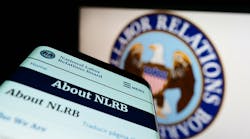We all know it. Keeping workers happy and productive is expensive.
Some material handling managers buy more ergonomic equipment. Some increase pay rates. There’s another way to improve retention and productivity while reducing labor costs. It’s a trend that’s emerging quickly in every industry.
Just about any company that offers benefits is aware of the pain of rising healthcare costs. Global consulting firm Watson Wyatt puts the overall annual rate of healthcare cost increases at two to three times the rate of inflation. This year, says the firm, the average annual rate increase is 8%. For some, the solution is wellness. Well, yes! More companies these days are encouraging their workers to be healthy.
More than 90% of Crown Equipment Corp. employees participate in the company’s voluntary HealthWise program, for example. Developed by Crown four years ago in partnership
with the University of Michigan Health Management Research Center, HealthWise offers incentives to employees and spouses who take steps to be healthier. Workers in four manufacturing and 40 branch locations throughout the U.S. who agree to participate can earn an annual benefit credit of up to $520. Participants are placed into a health category (low, medium or high risk) based on a health risk appraisal. Those at risk who agree to enroll in a six-month, phonebased health advisory program get an additional $100 cash award if certain requirements are met, while employees with acceptable biometrics receive a $10 Subway gift card.
“Healthier employees are more productive and have fewer injuries and healthcare costs,” James R. Heap, M.D., Crown’s corporate medical director, told me when I called to investigate. Heap gave me some numbers to prove it. In 2004, when the program began, 22.4% of employees were in the high-risk category. Last year, that number had dropped to 13.7%. It has had a clear effect on Crown’s labor costs. Annual healthcare costs for high-risk associates run the company, on average, two and one-half times more than low-risk employees. That doesn’t even include productivity improvements, which are, of course, harder to measure.
I know: Not everyone has the resources of Crown. However, Heap told me that wellness programs can be implemented in facilities of all sizes and budgets. The key is to partner with an expert. Crown selected the University of Michigan Health Management Research Center because it had experience with health risk appraisals and is considered an expert in health management programs.
Other companies are starting to offer their own versions of wellness programs. Wellness classes, on-site medical clinics, facility walking paths, medical help lines, fitness programs and cash rewards are being doled out to employees to keep costs down and productivity up. A survey by Watson Wyatt and the National Business Group on Health showed that 46% of employers currently offer financial rewards for good health, and another 26% plan to do so this year. True, there’s a price tag—the initial cost—but the return is better employee retention and productivity, fewer injuries and absences and lower healthcare costs.
Only you can decide what’s more costly—the cure or the disease.




